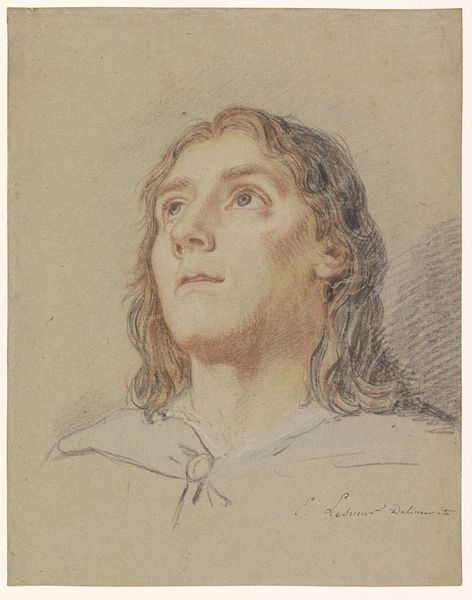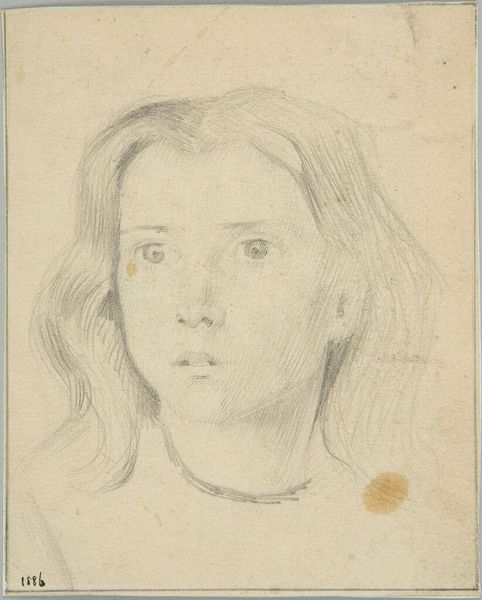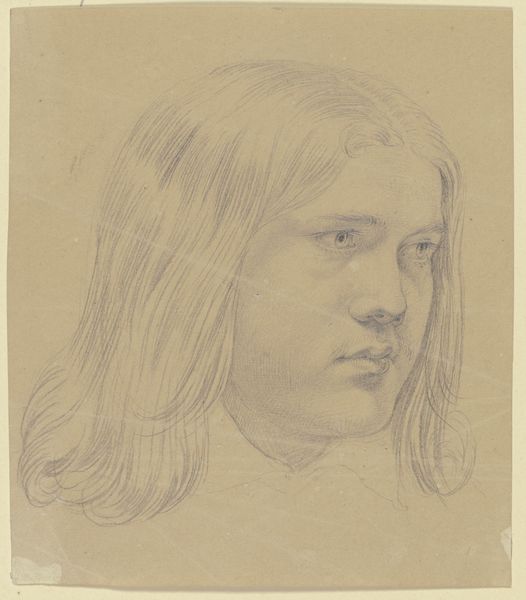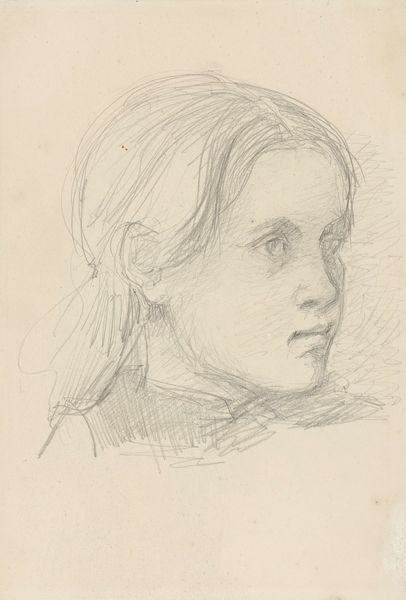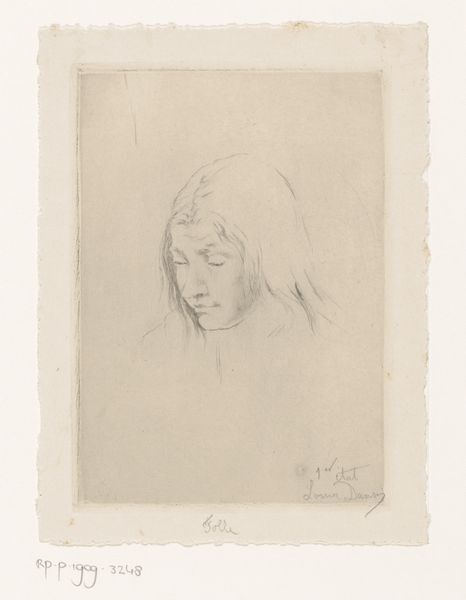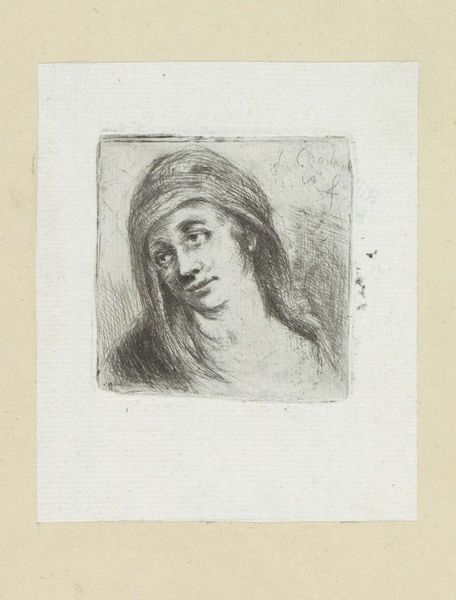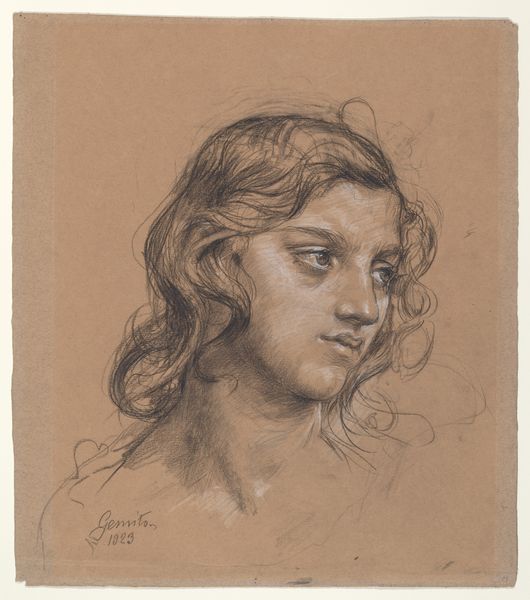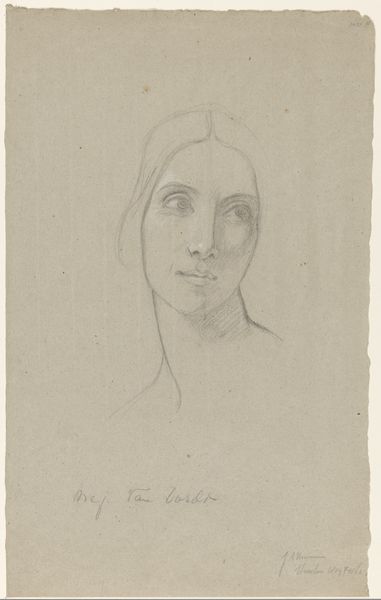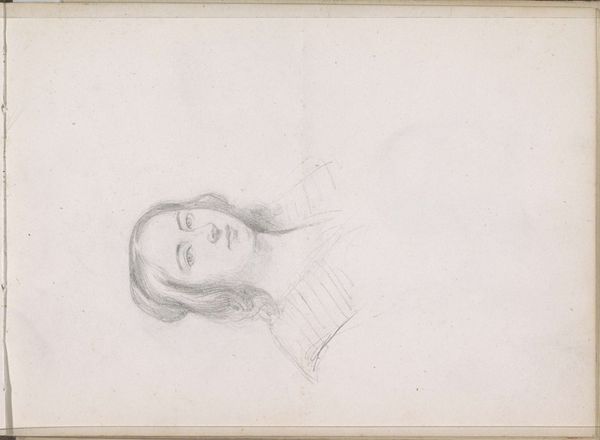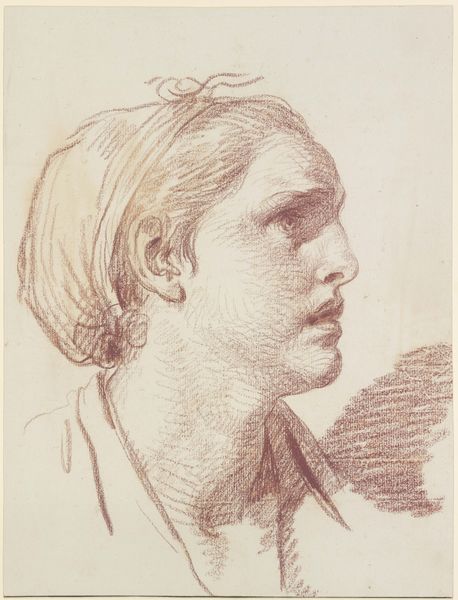
Illustration in Jérôme Paturot, by Louis Reybaud, Paris, 1846 1841 - 1851
0:00
0:00
drawing, print, graphite
#
portrait
#
drawing
# print
#
pencil drawing
#
romanticism
#
graphite
#
portrait drawing
#
history-painting
Dimensions: sheet: 3 3/8 x 3 15/16 in. (8.6 x 10 cm)
Copyright: Public Domain
Curator: Before us is "Illustration in Jérôme Paturot, by Louis Reybaud, Paris, 1846", created sometime between 1841 and 1851. The piece is a graphite drawing and print by J.J. Grandville currently housed at the Metropolitan Museum of Art. Editor: What strikes me immediately is the raw intensity of the expression. The slightly open mouth, the upward gaze...it's a study in distress. But rendered so plainly. Curator: Yes, and that's where the medium is paramount. The visible graphite strokes are vital; they build up shadow to construct form, imbuing a sense of palpable suffering through tonal variation. The texture is key here, giving a certain weight and seriousness. Editor: Absolutely. Looking at it, I wonder about the paper itself. What kind was it? Was it readily available, or a specialized material for the burgeoning print market in Paris? Did Grandville himself prepare it or was it outsourced? Those economic factors, I imagine, had a great deal to do with its look and purpose. Curator: Undeniably so. Yet consider the composition: the head centrally located, the gaze averted. These choices guide us not only to the psychological state of the subject, but position them, isolated and alone, within their internal crisis. Its minimalist context concentrates attention, magnifying psychological and existential dimensions. Editor: Though there's an interesting tension there, isn’t there? Because a printed illustration means mass production, reaching potentially thousands. This singular, individual anguish being mechanically reproduced. A commentary perhaps on alienation amidst industrialisation? Curator: Possibly. And the quality of the graphite undoubtedly impacts its reproducible nature, further playing with industrial reproduction, artistic expression, and distribution. Editor: True, the intersection of these factors cannot be disregarded when assessing its function and cultural impact. It offers a powerful reflection of the emerging print industry. Curator: Ultimately, "Illustration in Jérôme Paturot" remains a fascinating demonstration of form following concept. Editor: It is that. And prompts a deeper questioning of the role of accessible materials in producing relatable art.
Comments
No comments
Be the first to comment and join the conversation on the ultimate creative platform.
